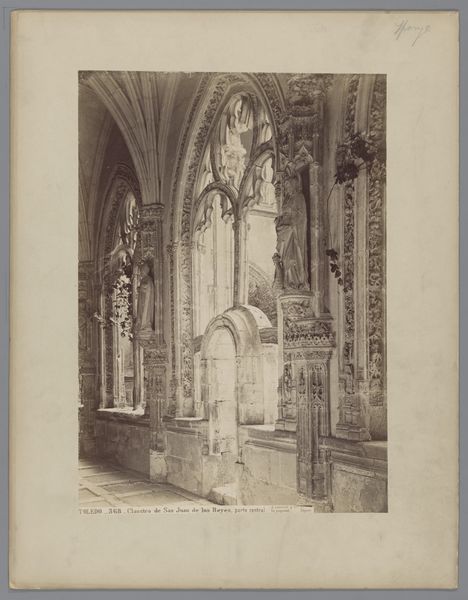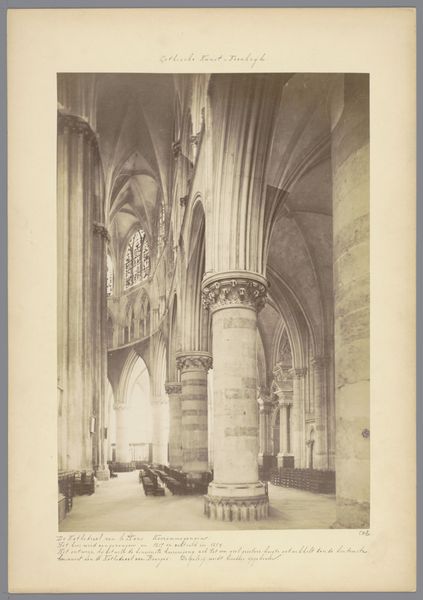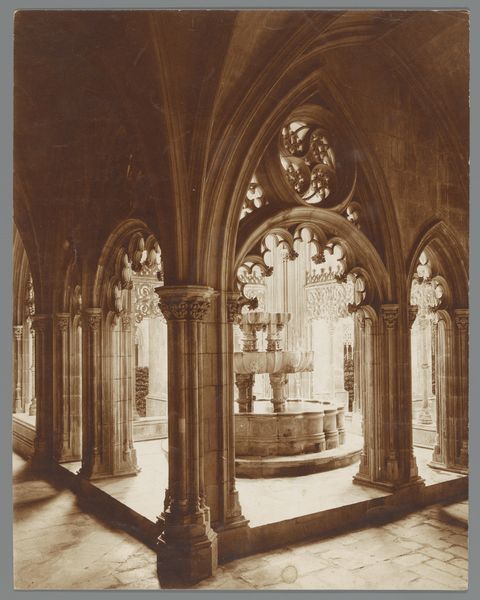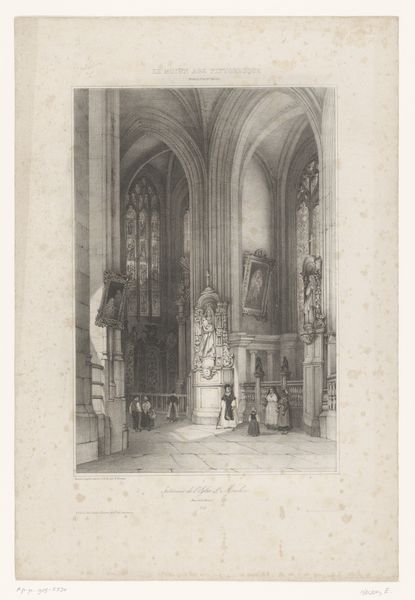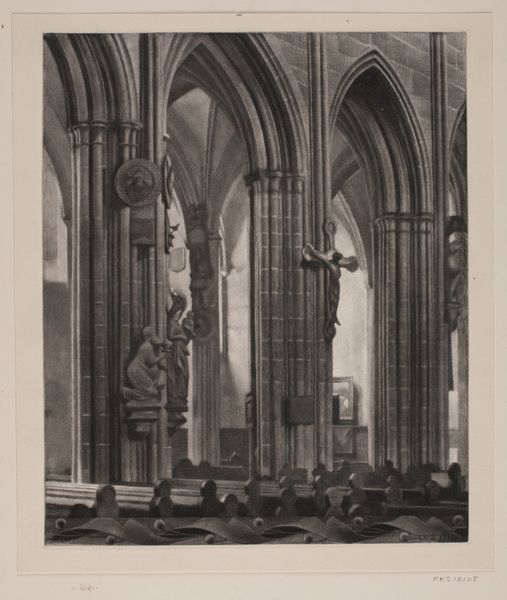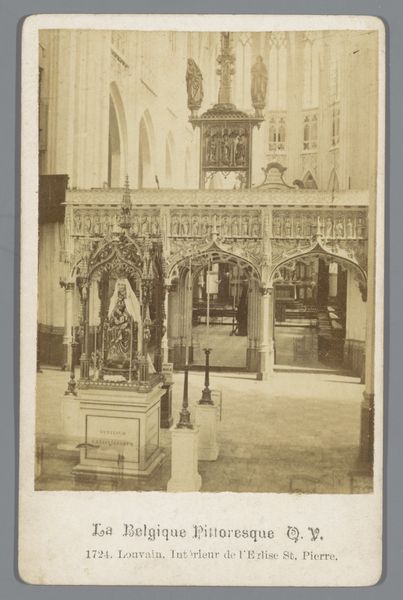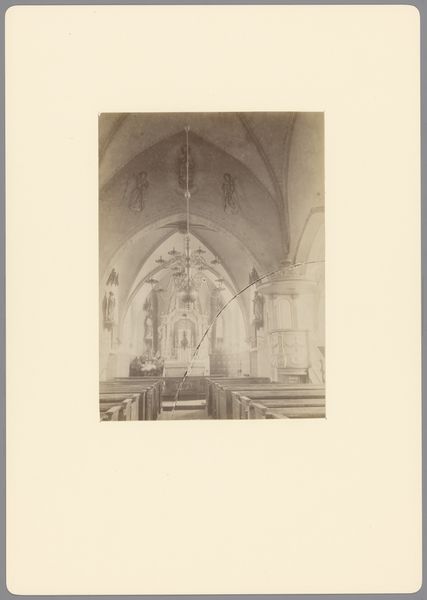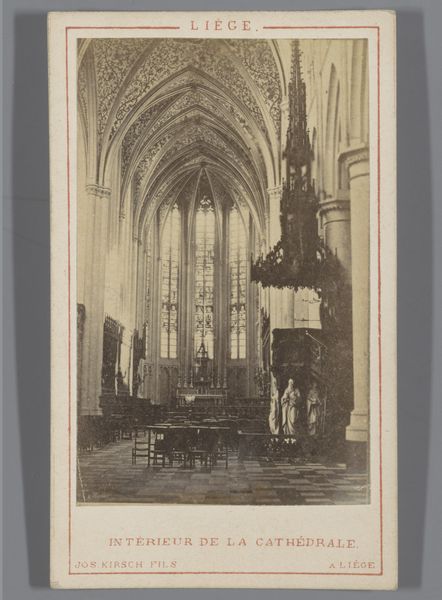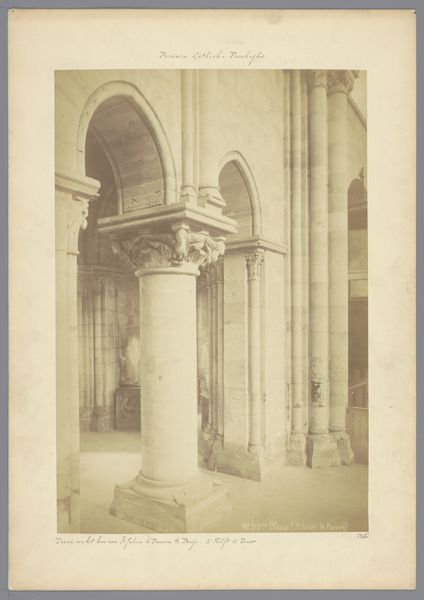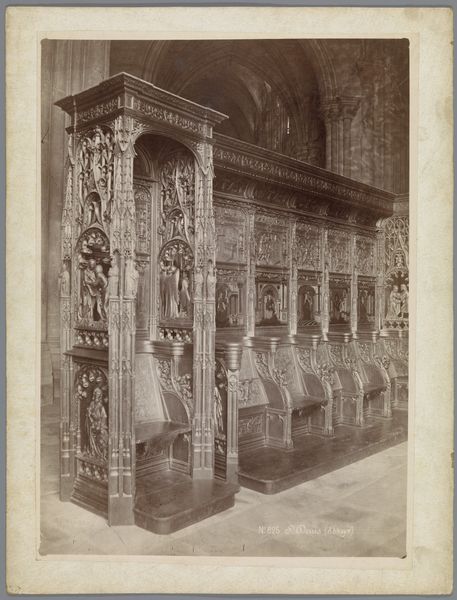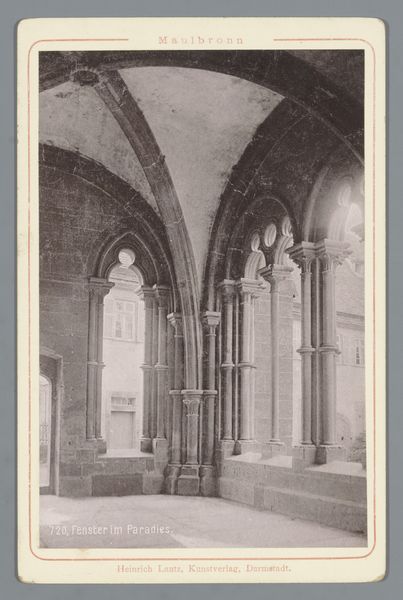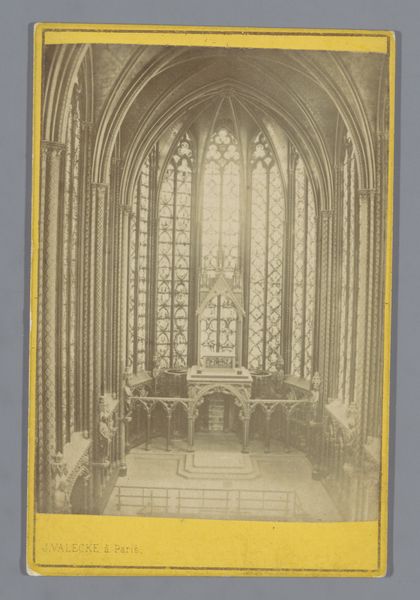
Gezicht op de tombe van Lodewijk XII en Anna van Bretangne 1850 - 1900
0:00
0:00
medericmieusement
Rijksmuseum
print, photography, site-specific, gelatin-silver-print
#
medieval
# print
#
photography
#
site-specific
#
gelatin-silver-print
#
history-painting
#
realism
Dimensions: height 414 mm, width 315 mm
Copyright: Rijks Museum: Open Domain
Editor: Here we have Médéric Mieusement's gelatin silver print, "View of the Tomb of Louis XII and Anne of Brittany," dating from 1850 to 1900. I'm immediately struck by how still and imposing everything feels, yet there is a strong Romantic pull toward this fascination with the Medieval past. What stands out to you? Curator: This image allows us to interrogate how photography can perpetuate power dynamics. This isn't just a record of a tomb; it's a deliberate framing that idealizes monarchy and reinforces certain historical narratives. How might the choice to photograph, rather than paint or draw, contribute to this sense of historical "truth" being presented? Editor: That’s interesting. I hadn't considered the photograph itself as part of the message. So, are you saying it almost legitimizes the monarchy through its supposed objectivity? Curator: Precisely! And consider the context. This photograph emerges during a period of shifting political power in France, rife with debates about national identity and historical legacy. The act of documenting and, in a sense, preserving this tomb becomes a political statement, consciously or unconsciously reinforcing traditional hierarchies. What assumptions does it invite the viewer to bring? Editor: Well, the size and detail definitely imply wealth and importance, making me consider who was valued at that time, and who was excluded. Curator: Exactly! Consider the under-representation of marginalized voices in historical accounts of that era. Editor: This really gives me a fresh perspective to think about what the photographer, and by extension the photograph, are trying to say. Curator: Indeed. Looking closely challenges us to ask: whose stories are being told and, crucially, whose are being omitted or actively silenced?
Comments
No comments
Be the first to comment and join the conversation on the ultimate creative platform.
